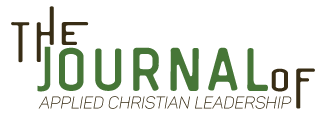By Daniel H. Pink
Edinburgh, Scotland: Canongate (2019) Kindle edition, 272 pages
Reviewed by DAVID SHIN
In his book When: The Scientific Secrets of Perfect Timing, author Daniel Pink contends that “when” we do something is as important as “how” we do it. The time of day at which we perform an activity can determine the level of effectiveness and ultimate outcome. The author cited research that revealed that the circadian rhythms of individuals would determine an optimum time of day when one’s individual vigilance would peak. For instance, some individuals are most sharp and analytical in the early morning or late morning, while others are most sharp and analytical in the evening. The practical application of the research would be to figure out your circadian rhythm type, understand the nature of the task, and then schedule activities.
In all cases, no matter one’s specific time of optimum productivity, there was a dramatic fall off of vigilance and analytical ability in the afternoon. The author suggested using the afternoon for relaxation, opening the right brain to insight and spontaneous creativity. This intentional disengagement from work in the afternoon results in greater overall productivity. For instance, taking a lunch break out of the office, social breaks, nature breaks, or a midafternoon 20-minute power nap all contribute to renewal and greater effectiveness and productivity.
Studies have shown that not only is the time of day a factor in determining one’s effectiveness but also the current point on a project timeline. For instance, the midpoint of a project consistently lends itself to a slump in motivation, vigilance, and productivity. On the other hand, approaching the endpoint of a project creates a surge in motivation. Being aware of the “midpoint slump” and “endpoint bump” is an important aspect of curbing or taking advantage of the natural psychological factors.
The benefits of having an awareness of one’s circadian rhythms from a leadership perspective is that it shifts the focus from being efficient with minutes to an effectiveness paradigm. For instance, taking afternoon breaks or even naps can be a guilt-ridden exercise or considered a waste of time for the efficiency-minded leader. However, from the perspective of effectiveness, afternoon breaks and even naps are essential for long-term sustainability. Furthermore, it is important to develop an awareness of one’s personal circadian rhythm in terms of vigilance and analytical ability and to proactively plan the day accordingly. Leadership blunders have been made many times due to exhaustion, poor self- management, and a lack of renewal; accordingly, the awareness of one’s circadian effectiveness rhythms and proactive self-management can mitigate against these forces.
One leadership challenge to applying the book’s thesis is that there are times when external realities make an activity’s timeframe outside of one’s control. The tendency to wait for the opportune optimum time for a decision or task can potentially lead to delay, and there are times when decisions need to be made or tasks performed immediately regardless of the time of day— where delay would be costly.
This book is a must-read, especially for those in leadership who have been burning the candle at both ends and gritting through tasks at the least productive portions of the day. Greater awareness of one’s personal circadian rhythm and an application of renewal principles are invaluable for any leader. The 21st-century pressures on leadership are unprecedented, and this book provides a practical paradigm of approaching each day from the standpoint of periods of optimum effectiveness and renewal. I recommend that you read this book, reflect on your personal daily rhythms, and proactively plan the day accordingly, remembering that the “when” is as important as the “how.”
David Shin is the pastor of the Hillside O’Malley Church in Anchorage, Alaska.

